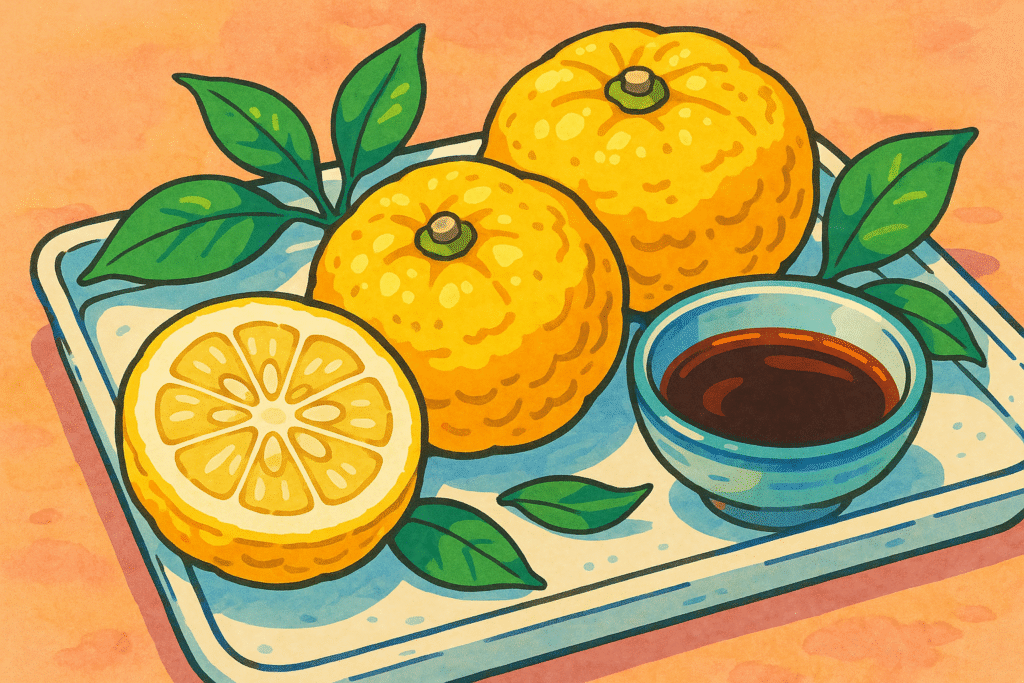Yuzu Fruit (Citrus junos)

About Yuzu Fruit
Yuzu is a citrus fruit like no other — intensely aromatic, tart, and floral. With its knobby, golden skin and punchy juice, yuzu is more about fragrance than flesh.
Used in both sweet and savory dishes, it’s a signature flavor in Japanese, Korean, and Chinese cuisines. Think ponzu sauce, yuzu kosho, yuzu curd, and even cocktails or spa waters.
The History of Yuzu Fruit
Yuzu likely originated in central China and arrived in Japan via Korea over 1,000 years ago. It quickly became a staple in Japanese cooking and culture — not just as food, but in bathing rituals (yuzuyu) during the winter solstice for good luck.
Traditionally grown in colder mountain regions, yuzu earned cultural significance as a wintertime fruit and symbol of perseverance.
Only recently has it found global fame, making appearances in Michelin-starred kitchens and boutique liqueurs.
The Science of Yuzu Fruit
Yuzu contains high levels of limonene, citral, and other aromatic compounds that give it its intense, perfumed citrus aroma.
Unlike most citrus, yuzu is cold-hardy and highly seedy, with minimal juice per fruit. The zest contains most of the volatile oils, which is why it’s often grated or infused rather than squeezed.
It also contains flavonoids and antioxidants, making it a popular ingredient in both health drinks and skincare.
The Geography of Yuzu Fruit
Yuzu is cultivated mainly in Japan’s Kochi, Tokushima, and Ehime prefectures. It also grows in parts of Korea and China, and more recently in specialty farms in Australia and California.
It thrives in mountainous, cool climates — unlike other citrus, which prefers heat. Wild yuzu trees still grow in Japan’s valleys, and traditional yuzu orchards often rely on low-tech, heritage farming.
Varieties of Yuzu Fruit
Japanese Yuzu
The most common type — tart and floral, often used for juice, zest, and infusions in sauces and sweets.
Hana Yuzu
Ornamental and used for bathing. Slightly milder flavor but intensely aromatic.
Yuko
A rare Japanese hybrid of yuzu and sweet orange, with gentler acidity and more juice. Used in drinks and desserts.
Dangyuja
A Korean variety closely related to yuzu. More pear-shaped and used primarily for tea and marmalade.
Sudachi (related)
Though not technically yuzu, it’s often used in similar culinary contexts. Smaller, greener, and spicier in taste.
FAQs All your questions about Yuzu Fruit: answered
Can I eat yuzu like an orange?
Not really. Yuzu is extremely tart, full of seeds, and low on flesh. It’s best used for zest, juice, or infusions.
What’s the difference between yuzu and lemon?
Yuzu is more floral, complex, and less acidic. It has notes of lime, grapefruit, and pine — all at once.
Can I buy fresh yuzu outside Japan?
It’s rare. Fresh yuzu is seasonal and often restricted for export. Look for bottled juice or frozen zest in specialty markets.
How do you use yuzu in cooking?
Zest it over noodles, juice it into ponzu sauce, whip it into curd or add it to cocktails. Its aroma does the heavy lifting.